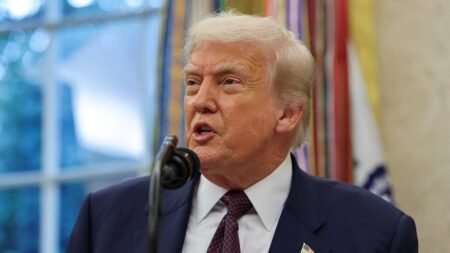The Golden Dome is a concept for a missile defense system that gained attention during the Trump administration in the United States. It is envisioned as an advanced counterpart or enhancement to Israel’s well-known Iron Dome system. The idea behind the Golden Dome reflects ongoing efforts to improve missile defense capabilities in the Middle East, a region increasingly threatened by modern missile and drone attacks.
Israel’s Iron Dome has been one of the most successful mobile air defense systems since its first use in 2011. Designed to intercept short-range rockets, artillery shells, and drones, it has achieved a high interception rate and earned a reputation as a “combat-proven” shield. However, recent attacks using more advanced missile technology have exposed some limitations of the Iron Dome system. These developments have led to discussions about the need for next-generation defense solutions, including the Golden Dome.
The Golden Dome is not a fully operational system but rather a proposed project that represents U.S. efforts to support and strengthen Israel’s missile defense capabilities. It is thought to address challenges that the Iron Dome may face with new and evolving threats. While the Iron Dome focuses primarily on short-range threats, the Golden Dome concept likely aims to extend defense coverage to handle longer-range or more sophisticated missile attacks. This expanded capability would be crucial as adversaries such as Iran continue to develop and deploy advanced missile and drone technology.
During President Donald Trump’s time in office, the U.S. government showed interest in developing this next level of missile defense technology. The Golden Dome idea symbolizes a step toward maintaining technological superiority in the region. It highlights the importance of close military cooperation between the U.S. and Israel, especially in facing common security challenges.
The strategic significance of the Golden Dome lies in its potential to fill gaps in current missile defense networks. While Iron Dome remains highly effective against many short-range projectiles, it was never designed to counter all types of missile threats. The recent Iranian missile strikes on key Israeli targets revealed vulnerabilities, suggesting that new systems like the Golden Dome could be vital for future defense strategies.
The Golden Dome is also part of a broader trend where nations seek to develop or upgrade missile defense systems to keep pace with rapidly advancing offensive missile technologies. For example, Turkey had announced plans for its own system called the Steel Dome, inspired by the Iron Dome’s success. Similarly, the U.S. and its allies recognize the need for continued innovation to prevent missile attacks from causing severe damage to critical infrastructure and civilian populations.
Although details about the Golden Dome remain limited in public sources, its mention signals a commitment to advancing missile defense technology beyond what currently exists. The system may incorporate improvements in radar, tracking, interception accuracy, and integration with other defense layers. Such advancements could provide a more robust shield capable of defending against a wider range of threats.
The challenges that the Golden Dome aims to address are not unique to Israel. Around the world, countries are facing the threat of missile attacks with increasing complexity. This has driven investments in research and development of missile defense technology, including systems that can intercept ballistic missiles, cruise missiles, and unmanned aerial vehicles.
For Israel, the Golden Dome concept represents hope for regaining an edge in a shifting security landscape. After the recent drop in the Iron Dome’s interception success rate due to new missile technologies used by adversaries like Iran, Israel needs to rethink and upgrade its defensive tools. The Golden Dome project embodies that effort and reflects the ongoing partnership between Israel and the United States in security matters.
While the Iron Dome has saved countless lives and prevented much damage over the past decade, the region’s evolving threats require constant innovation. The Golden Dome stands as a symbol of future defense ambitions, aiming to create a shield that is more resilient, adaptable, and capable of protecting against the modern arsenal of missile and drone attacks.
The path from concept to deployment for the Golden Dome may be long and complex, but its potential impact on regional security is significant. As missile threats grow in sophistication and scale, systems like the Golden Dome may become essential components of defense strategies not only for Israel but for other nations facing similar challenges.







